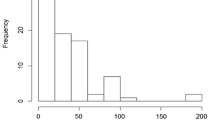Abstract
Objectives
This study investigated exposure to arsenic, a carcinogenic fungicide used in wine growing.
Methods
The first phase compared urinary arsenic excretion of controls and workers exposed at the end of application. The second phase measured the increase in urinary arsenic excretion during the first day of use.
Results
A significant increase in urinary arsenic excretion was observed in arsenic applicators during the first phase. Urinary arsenic concentrations exceeded the American Conference of Governmental Industrial Hygienists (ACGIH) exposure index in one-third of the workers. The second phase showed a significant increase in urinary arsenic excretion by the first day of application. A closed tractor cabin provided a protective effect, but the efficacy of individual protection equipment was not demonstrated.
Conclusion
This study showed the difficulties of achieving the effective protection of arsenic applicators and has led to the banning of the use of arsenic in French vineyards.
Similar content being viewed by others
References
Aitio A, Hakala E, Pyy L (1996) Arsenic. In: Biochemical monitoring of chemical exposure in the workplace, vol 2. WHO, Geneva, pp 18–34
Apostoli P, Bartoli D, Alessio L, Buchet JP (1999) Biological monitoring of occupational exposure to inorganic arsenic. Occup Environ Med 56:825–832
Buchet JP, Lauwerys R (1981) Evaluation of exposure to inorganic arsenic in man. In: Fachetti S (ed) Analytical techniques for heavy metals in biological fluids. Elsevier Science, Amsterdam, pp 75–90
Colosio C, Fustinoni S, Birindelli S, et al (2002) Ethylenethiourea in urine as an indicator of exposure to mancozeb in vineyard workers. Toxicol Lett 134:133–140
Doignon J, Parant C, Larche-Mochel M, Rafi MC, Lazarini HJ, L’Epée P (1984) Enquête épidémiologique sur l’arsenicisme urinaire chez des viticulteurs manipulant de l’arsénite de sodium. Arch Mal Prof 45:138–141
Dubos B, Larignon P (2001) L’esca, ou le Black dead arm. La vigne 125:32–33
Fabre I, Gingomard MA, Marcotullio E, Berson N, Delemotte B, Mercat FX, Choutet P (1998) Un réseau français de toxicovigilance agricole. BEH 43:187–189
Guindo-Nignan M, Garnier R, Telolahy P, Auger J, Ditcharles D, Dossier E, Klein E, Nguyen-Aubier D, Renault B (1992) Excrétion urinaire d’arsenic minéral, d’acide méthylarsonique et d’acide diméthylarsinique lors de la fabrication de micro-composants sur substrat d’arséniure de gallium. Arch Mal Prof 53:375–381
Guo H, Lu F (1994) Arsenic ingestion and internal cancers. Am J Epidemiol 139:1233–1234
Henry RJ (1965) Clinical chemistry: principles and techniques, 3rd edn. Harper and Row, New York
Hung-Yi C, Shu-Ti C, Yi-Hsiang H, Yi-Li C, Chw-Hsiaot, Min-Li W, Chien-Jen C (2001) Incidence of transitional cell carcinoma and arsenic in drinking water. Am J Epidemiol 153:411–421
IARC (1987) IARC monographs on the evaluation of carcinogenic risks to humans [Suppl 7]. IARC, Lyon
IARC (2002) IARC monographs on the evaluation of carcinogenic risks to humans, vol 84. Some drinking-water disinfectants and contaminants, including arsenic. IARC, Lyon
Jarup L, Pershagen G, Wall S (1989) Cumulative arsenic exposure and lung cancer in smelter workers: a dose–response study. Am J Ind Med 15:31–41
Vahter M, Friberg L, Rahnster B, Nygren A, Nolinder P (1986) Airborne arsenic and urinary excretion of metabolites of inorganic arsenic among smelter workers. Int Arch Occup Environ Health 57:79–91
Yamaushi H, Takahashi IK, Mashiko M, Yaamamura Y (1989) Biological monitoring of arsenic exposure of gallium arsenide (and inorganic arsenic) exposed workers by determination of inorganic arsenic and its metabolites in urine and hair. Am Ind Hyg Assoc J 11:606–612
Acknowledgements
The authors would like to thank the Mutualité Sociale Agricole of the Aude, Charente, Gard, Indre-et-Loire, Lot, Maine-et-Loire, Pyrenees-Orientales, Rhône and Tarn departments, the Industrial Toxicology Laboratory of St-Luc University Clinic in Brussels (Professor Haufroid and Geraldine Durand) for their contributions.
Author information
Authors and Affiliations
Corresponding author
Rights and permissions
About this article
Cite this article
Grillet, J.P., Adjémian, A., Bernadac, G. et al. Arsenic exposure in the wine growing industry in ten French departments. Int Arch Occup Environ Health 77, 130–135 (2004). https://doi.org/10.1007/s00420-003-0490-1
Received:
Accepted:
Published:
Issue Date:
DOI: https://doi.org/10.1007/s00420-003-0490-1




